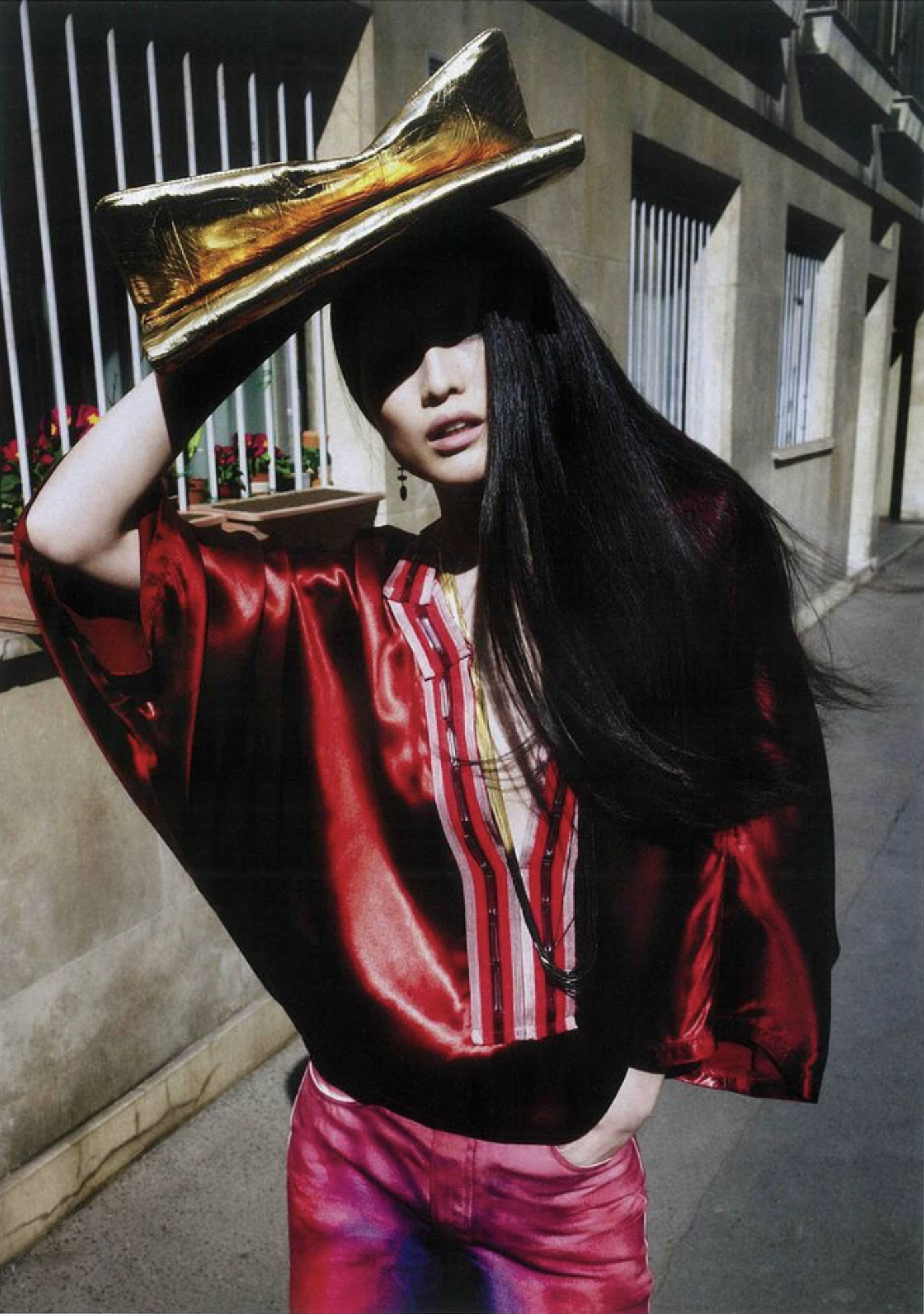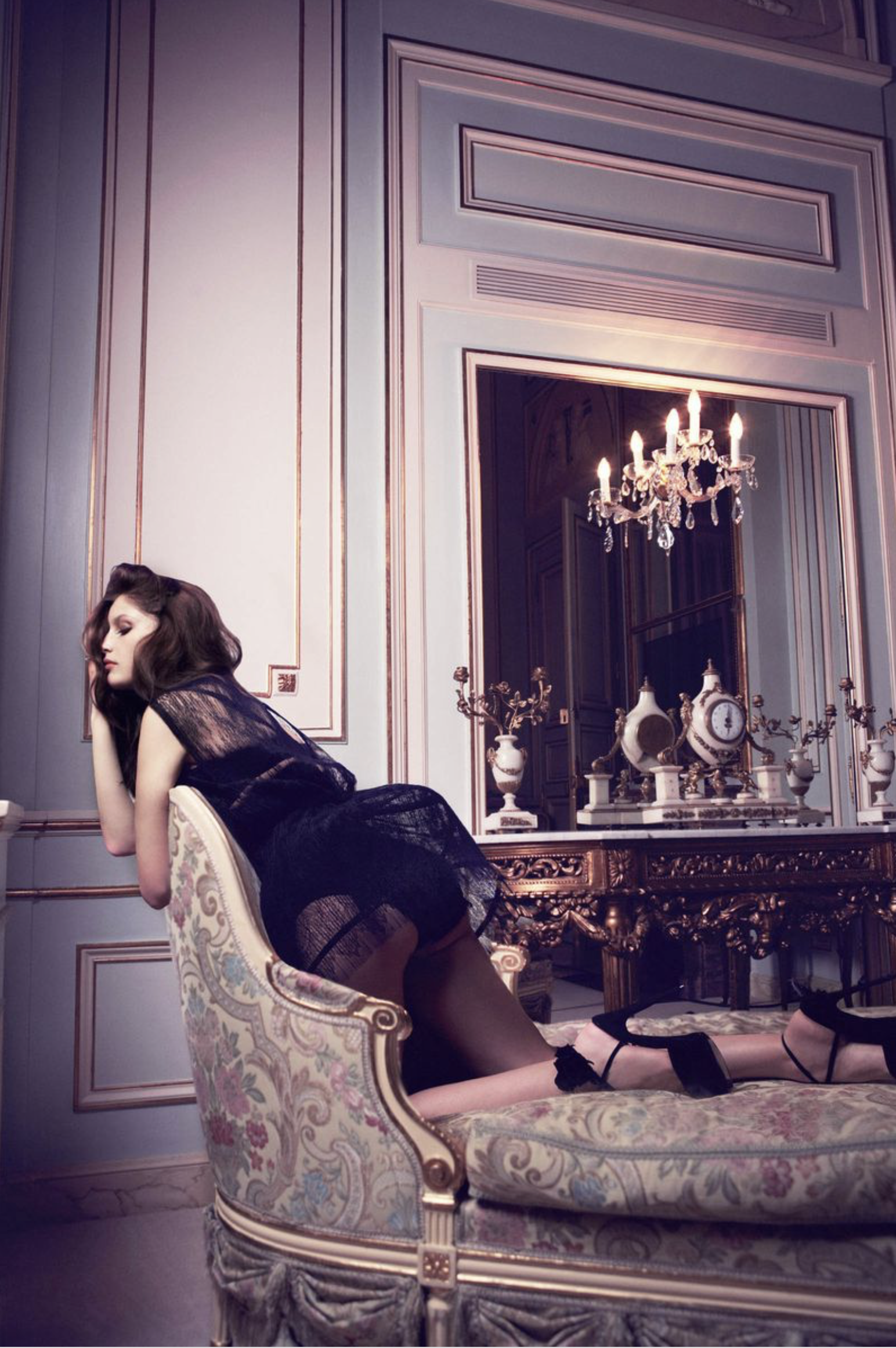Jamily Wernke Meurer Strikes US Military Poses, Lensed By Hans Feurer For Numéro Berlin
/Model Jamily Wernke Meurer honors US Allied forces, presumably associated with WWII, styled by Samuel Francois in images by Hans Feurer for Numéro Berlin.
Much of the world honored the 75th anniversary of D-Day this past week. The Allied invasion of Normandy on June 6, 1944 was the largest seaborne invasion in history.
With a huge force of over 150,000 soldiers, the Allies attacked and gained a victory that became the turning point for World War II in Europe. Historians estimate that 4,414 Allied soldiers died on June 6, 1944, with 2501 of them Americans.
Many believe that D-Day was America’s finest hour, with the US reluctantly joining the Allied war effort after Japan’s bombing of Pearl Harbor. The sacrifices and suffering by men soldiers on that day bring all but the cold-hearted to a place of somber reflection and often tears.
Much less is known about the role of women in the WWII effort generally and its possible role in activating the second wave of feminism two decades later.
In summarizing the role of women in WWII, The Women’s Memorial writes:
The war changed women’s expectations and gave impetus to movement for greater gender equality—even though postwar society expected women to leave the workplace and focus on their roles as wives and mothers.
Almost 400,000 women served in and with the armed forces in the WWII effort. In 1939, the numbers of women serving in the military exceeded those of male soldiers. They enlisted “for the duration plus six months” to free male soldiers for combat by filling jobs that matched women’s “natural” abilities in the view of the military and federal government. Clerical work and jobs requiring rote attention to detail and small motor skills were perfectly designed for women’s minds, said the male bureaucrats.
Women served in the Army and Navy Nurse Corps, Women’s Army Corps (WAC), and in the Navy (WAVES), Coast Guard (SPARs) and Marine Corps Women’s Reserves. Although not officially members of the armed forces, Women Airforce Service Pilots (WASPs) provided critical support for the war effort. Other women worked with the military through service with organizations such as the American Red Cross, the United Service Organizations (USO), and the Civil Air Patrol.
In 1942, at age 16, Britain’s Princess Elizabeth registered with the Labour Exchange, being keen to join the women’s armed forces. In March 1945, the future Queen of England was truck mechanic (No. 230873) in the Women's Auxiliary Territorial Service, based at the Mechanical Transport Training Section, Camberley, Surrey. Mashable has some great images of Queen Liz.
Women’s participation in the US Armed Forces during World War II was a major turning point in the relationship of women to the military, writes The Women’s Memorial. The initial response to the idea of enlisting women met enormous resistance.
The opposition to women’s role in the expanding war effort decreased as the war escalated and the national pool of qualified male draftees dwindled. Recruiting another woman eliminated the need to draft a man in her place.
“Women volunteers came to be viewed not just as a source of women’s skills, but as a valuable source of high-quality personnel to meet overall manpower requirements for the massive military buildup.”
In the waning months of WWII, a nursing shortage prompted then President Roosevelt to request a nurse draft bill in his 1945 State of the Union address. The House of Representatives quickly passed a bill that stalled in the Senate.
When Germany surrendered in May 1945, the need for a nurse draft evaporated and the bill was set aside. Two decades later, the majority of women serving in Vietnam were nurses.
Men are notoriously reluctant to admit that they are wrong about anything, but then Gen. Eisenhower, a five-star general in the United States Army who served as supreme commander of the Allied Expeditionary Forces in Europe, told Congress after the war that he had been wrong in his views about women serving in the military.
“I was violently against it.” the future president added, “Every phase of the record they compiled during the war convinced me of the error of my first reaction.” Eisenhower went on to fight for a permanent place for women in the US Armed Forces.
After the war, Fleet Admiral Chester Nimitz told Congress that when the formation of the WAVES was first contemplated:
“I was one of the doubters in the early days … and I was definitely reluctant to see this women’s program started. However after it [the WAVES] started and after I saw it work, I became a convert.”
Fast-forward to 2013 when US Defense Secretary Leon Panetta announced that the military’s combat exclusion policy on women would be rescinded. In 2014 Adm. Michelle Howard, an African American woman, became the Navy’s first four-star woman admiral and commander of US Naval Forces in Europe, Africa, and Naples.
In 2015, Capt. Kristen Griest, Maj. Lisa Jaster, and 1st Lt. Shaye Haver became the first female soldiers to graduate from Ranger School. On Dec. 3, 2015 the Dept. of Defense Secretary Ashton Carter announced that all combat jobs would now be open to women. “There will be no exceptions,” Carter emphasized.
Air Force Gen. Lori Robinson also took over as leader of U.S. Northern Command in 2016, becoming the first female service member to lead a unified combatant command and thus the highest ranking woman in U.S. military history. Female-enlisted sailors deployed on submarines for the first time.
This list is very incomplete and is only meant to record the progress American women are making in our military. The road for women soldiers in the US military has not been an easy one, but in May 2019, the US Military Academy’s graduation class included 34 black women, achieving yet another milestone for women serving in the US military.

















